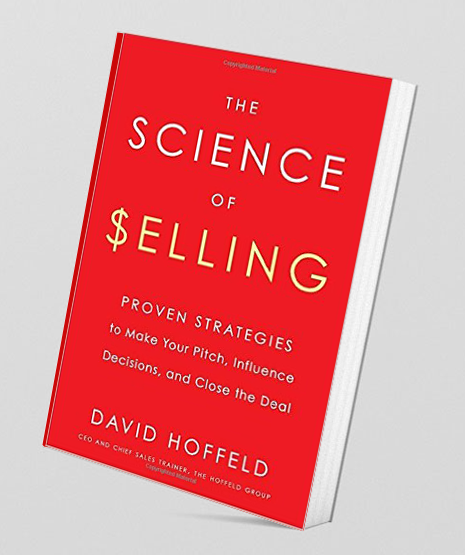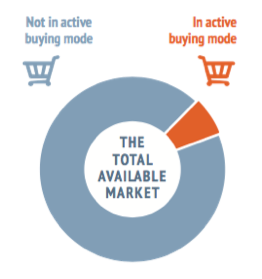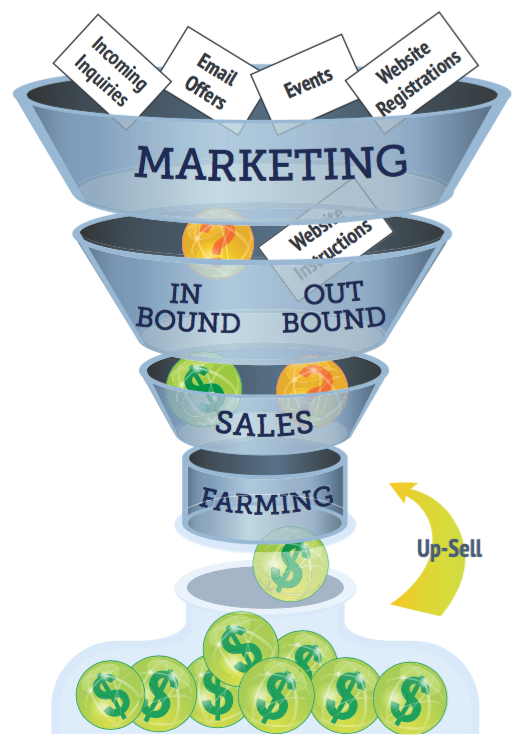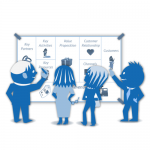Review: The Science of Selling – Proven Strategies to Make Your Pitch, Influence Decisions, and Close the Deal
 One of my LinkedIn connections recommended the book ” The Science of Selling – Proven Strategies to Make Your Pitch, Influence Decisions, and Close the Deal” by David Hoffeld. I thought it was an interesting title and decided to read it.
One of my LinkedIn connections recommended the book ” The Science of Selling – Proven Strategies to Make Your Pitch, Influence Decisions, and Close the Deal” by David Hoffeld. I thought it was an interesting title and decided to read it.
The book is listed to be 288 pages, but in reality, it is only 212 pages. The remaining pages are introductions and notes. It is certainly a worthwhile book reading, and if you are new to sales, then you can pick up most of the tools that you need from this book.
I can recommend reading the book to anyone with a role in sales.
Sales as a science
 The science claim comes from connecting an overwhelming amount of 3rd party social science research examples to the situations where we are face to face with our potential clients. David Hoffeld explains that social science research confirms that humans are not rational and that their decision making doesn’t follow a logical pattern. By understanding the findings of the research and by applying certain approaches you can impact the potential customer’s state of mind so that she is better prepared to answer your questions and consider your value proposition. David Hoffeld provides a series of suggestions for how you can apply this scientific insight in specific sales situations.
The science claim comes from connecting an overwhelming amount of 3rd party social science research examples to the situations where we are face to face with our potential clients. David Hoffeld explains that social science research confirms that humans are not rational and that their decision making doesn’t follow a logical pattern. By understanding the findings of the research and by applying certain approaches you can impact the potential customer’s state of mind so that she is better prepared to answer your questions and consider your value proposition. David Hoffeld provides a series of suggestions for how you can apply this scientific insight in specific sales situations.
The challenge I faced was that the material is so overwhelming that it will take a long time to internalize and operationalise. Understanding that people are different and that people can be in various moods is certainly helpful, but I don’t think I need to be a psychiatrist before I can be a professional sales person. A healthy portion of situational awareness will be adequate for most of us.
An increasing number of sales people do not have face-to-face engagements with their potential clients. How do you apply your new psychological insight and understanding of body language responding to voicemail, emails and in conference calls?
Although the material presented is interesting I find the book somewhat long winded on this subject.
Facilitating the customer journey
 I like the book’s philosophy that sales are a facilitation of the customer’s journey. I will add that sales are the facilitation of the last mile of the customer’s journey.
I like the book’s philosophy that sales are a facilitation of the customer’s journey. I will add that sales are the facilitation of the last mile of the customer’s journey.
For most companies offering B2B solutions, only a small fraction of their potential market is in active buying mode at any one time.
If the companies in your market invest in your type of product (or service) every fifth year and the active buying process takes six months, then only 10% of your total market will be in BANT buying [1] mode at any point in time. This means that about 20% of your potential customers made an investment decision in your domain within the last year. Not all of them were positive so some could potentially be reactivated, but how many?
A certain percentage of the companies in your market will be considering if they should take action on the areas where you provide solutions. Let us say that 20% of your potential customers are at this stage and may become BANT active in twelve months. In this scenario around 70% of the potential market is not actively looking for what you offer.
This is why I like the Six Whys described in the book:
 They are not new, but they are well presented and with many good examples and suggestions. Most salespeople spend most of their time working on deals that will not come to fruition or deals they cannot win. The Six Whys is an excellent way to identify these types of situations. If you don’t get convincing answers to the Six Whys, then you can disqualify the lead and focus on more productive opportunities.
They are not new, but they are well presented and with many good examples and suggestions. Most salespeople spend most of their time working on deals that will not come to fruition or deals they cannot win. The Six Whys is an excellent way to identify these types of situations. If you don’t get convincing answers to the Six Whys, then you can disqualify the lead and focus on more productive opportunities.
Asking Questions
 The chapter on how to ask questions is also excellent, but I was surprised not to find any reference to SPIN. The approach presented by David Hoffeld is very close to the original SPIN approach that I consider the cornerstone of professional sales even today.
The chapter on how to ask questions is also excellent, but I was surprised not to find any reference to SPIN. The approach presented by David Hoffeld is very close to the original SPIN approach that I consider the cornerstone of professional sales even today.
Questions are the primary tool for sales professional no matter what she sells. The book provides some very useful guidelines for how to prepare and ask relevant questions.
A book for the individual sales person
 The Science of Selling is a book for the individual sales person and how she can improve her personal skills. It is not a book for how a company can maximize its revenue growth.
The Science of Selling is a book for the individual sales person and how she can improve her personal skills. It is not a book for how a company can maximize its revenue growth.
The book left me with the following questions.
- What comes before the sales process and who are performing these activities?
- How do they (marketing and sales development) work with sales ensuring that leads are truly qualified?
- Is there life after closing the deal?
- Can any company beyond the startup phase base its growth on having top performers in all positions?
As we grow our businesses, it becomes evident that we cannot have individual top performers in all positions. That doesn’t mean that we shouldn’t help our co-workers improve their individual performance, but it means that we need to design and optimize business processes and a culture that can make teams of regular people deliver outstanding results.
Is it that difficult?
I have been in revenue generation for over 35 years, and I must agree that sustained top performance among sales people remains reserved for the very few. Most of the sales people I come across do not have a robust toolbox for performing their job well, and their companies are not helping them much.
Could David Hoffelds book The Science of Selling provide that?
Yes, I believe it can. Despite my critical comments above the book does offer a good review of the most important aspects of a sales persons working environment. The book will give most value if read by a team of sales people where the recommendations can be discussed and applied in smaller portions and rehearsed over an extended period. It is not a book with a handful of quick fixes and recipes for harvesting the low-hanging fruit, and that makes it a great book.
[1] We say that potential customers are in BANT mode when they have access to a Budget, there is someone with Authority to make a decision, there is a recognized Need, and there is a Timeline for making the decision. BANT means that there is a high probability for a decision, but there is, of course, no guarantee that the investment will be made within the deadline or will be done at all. Companies always have competing investments so the one involving your type of solution may lose to an indoor tennis court for the staff.
–ooOoo–
You may be interested in this free whitepaper:








